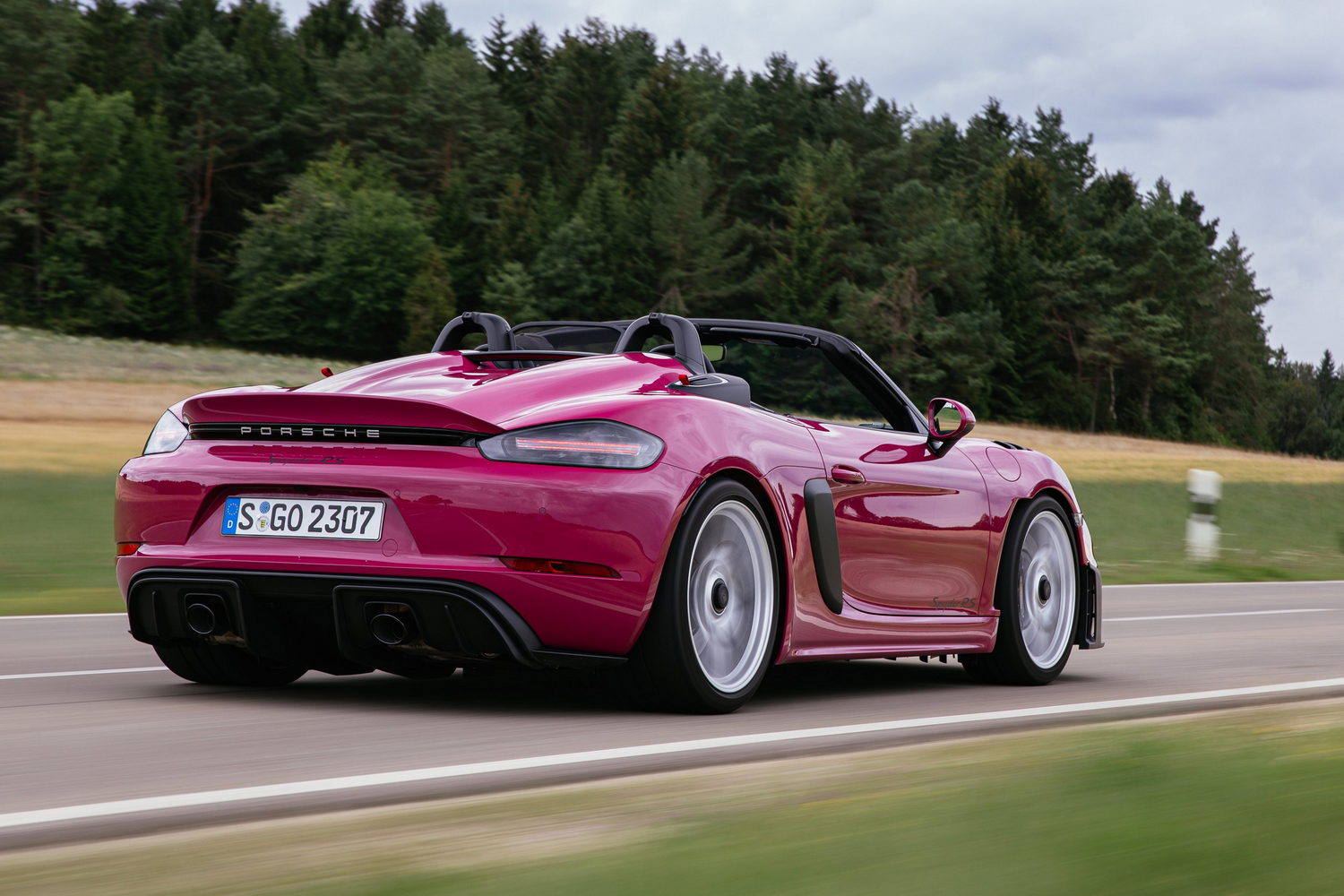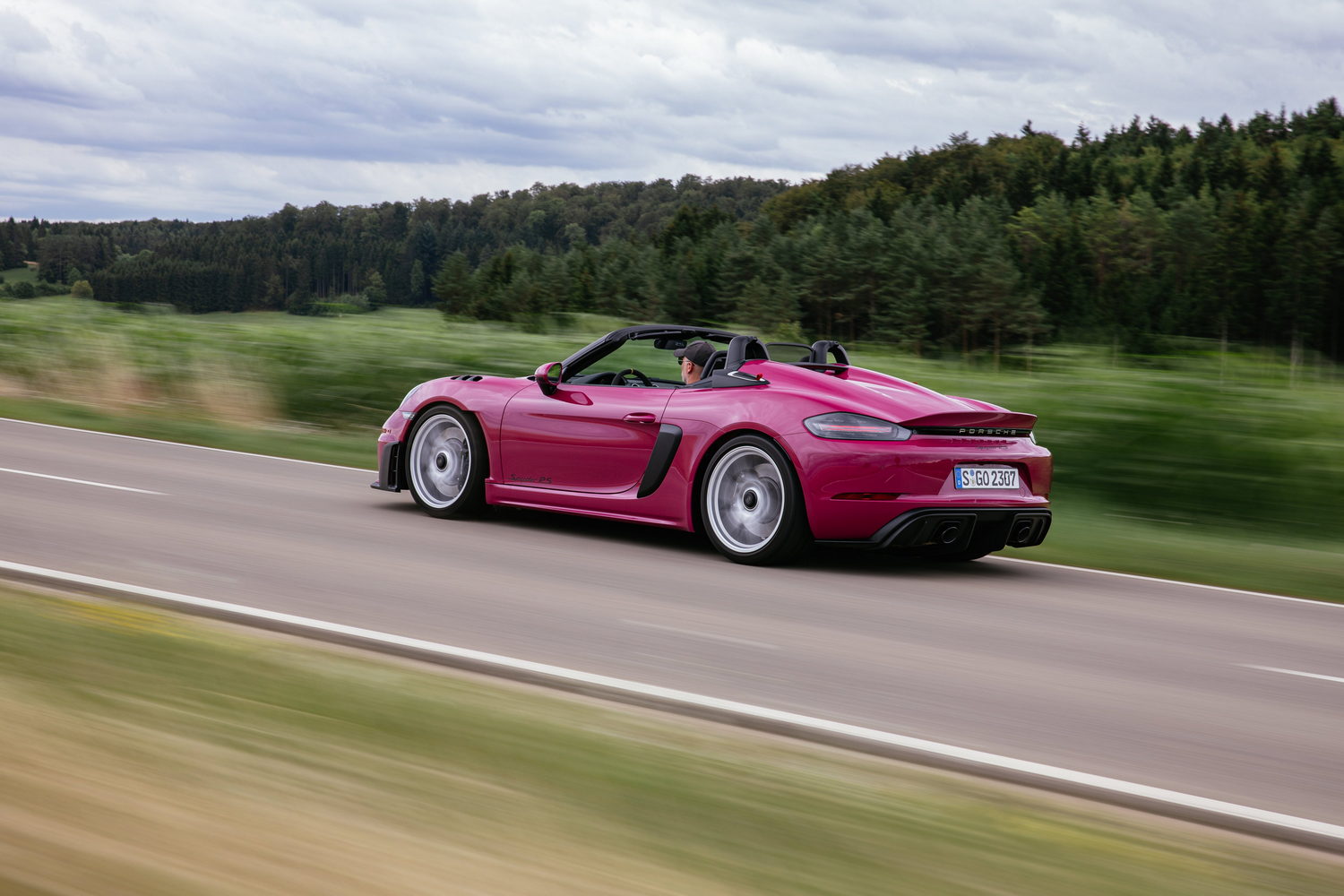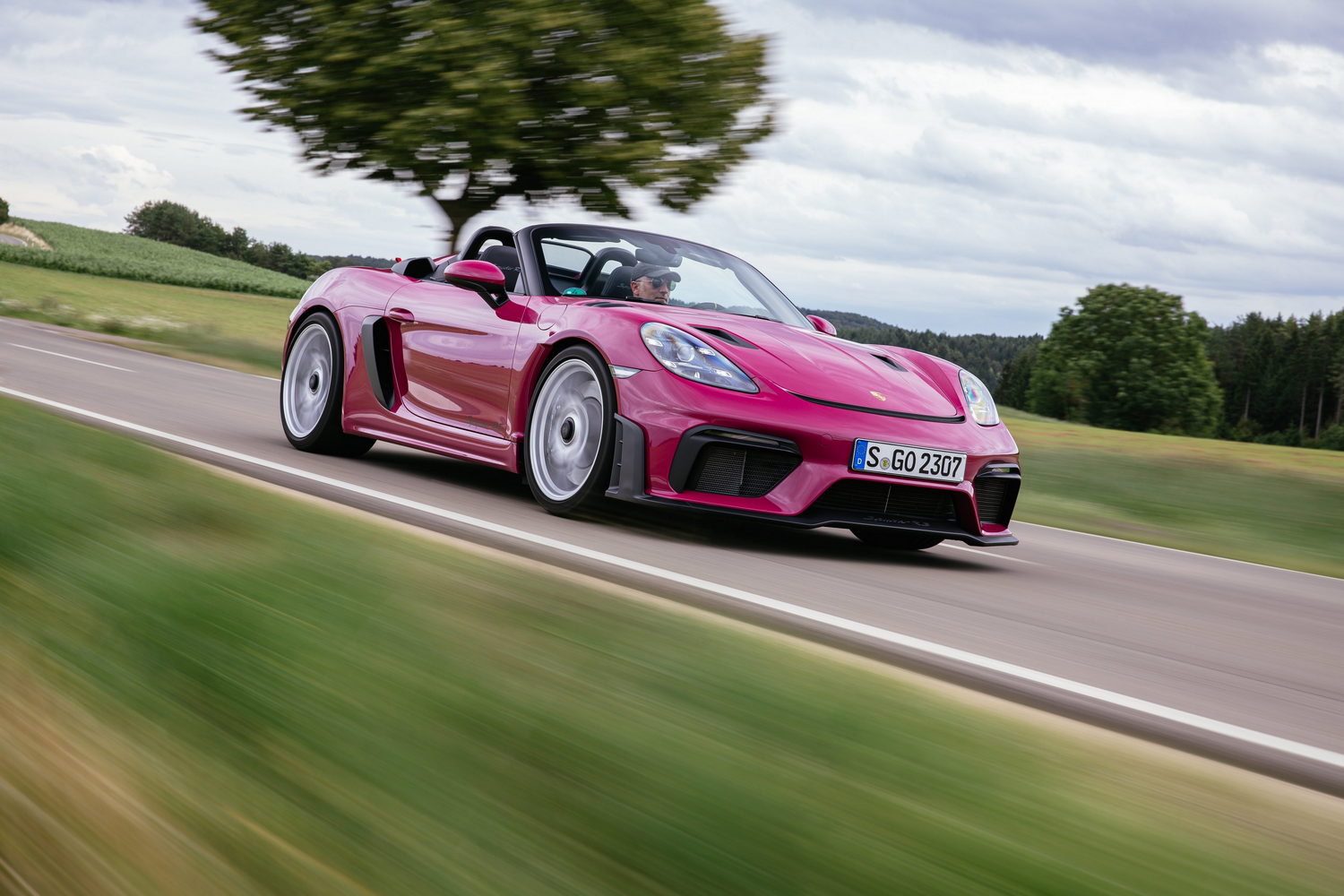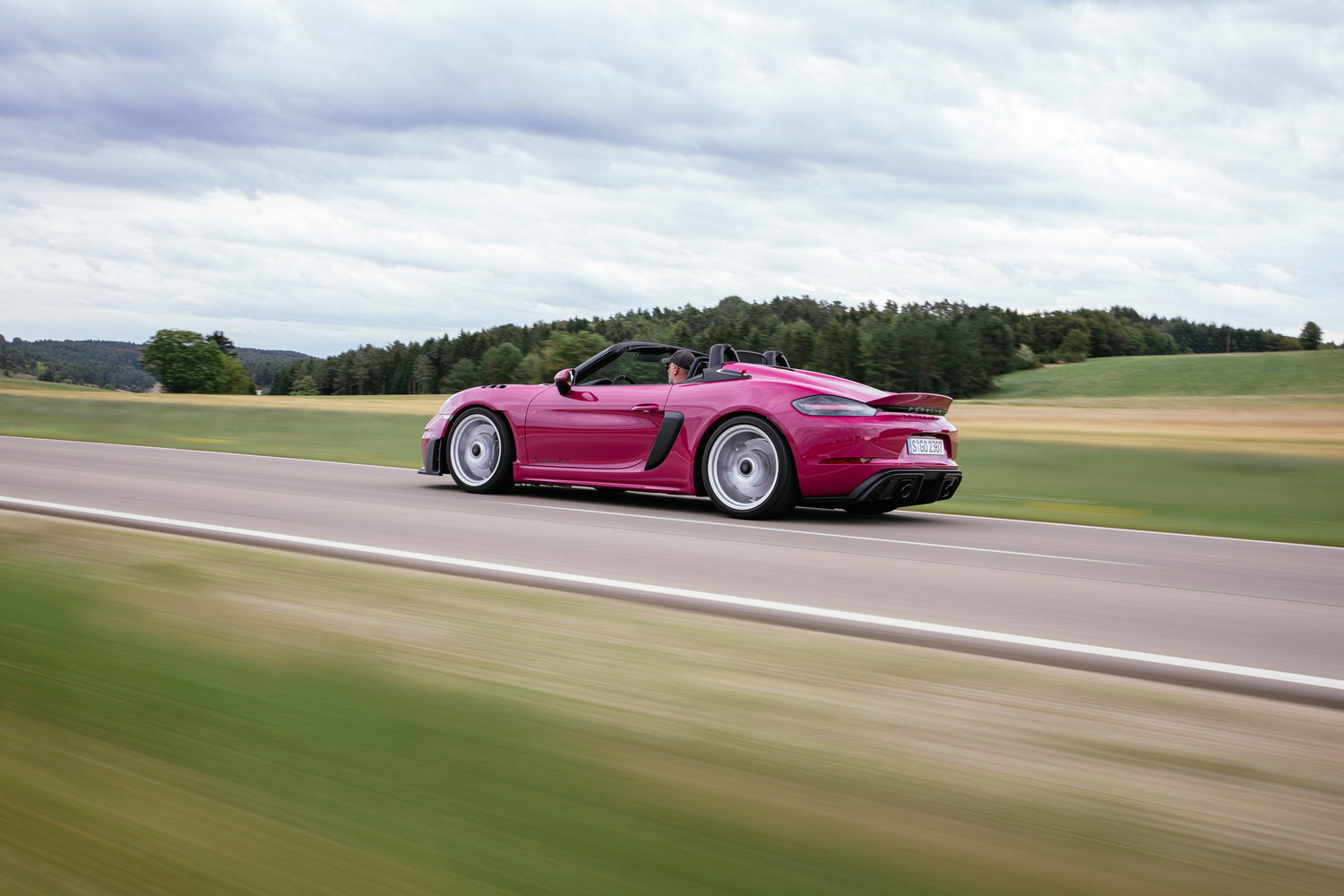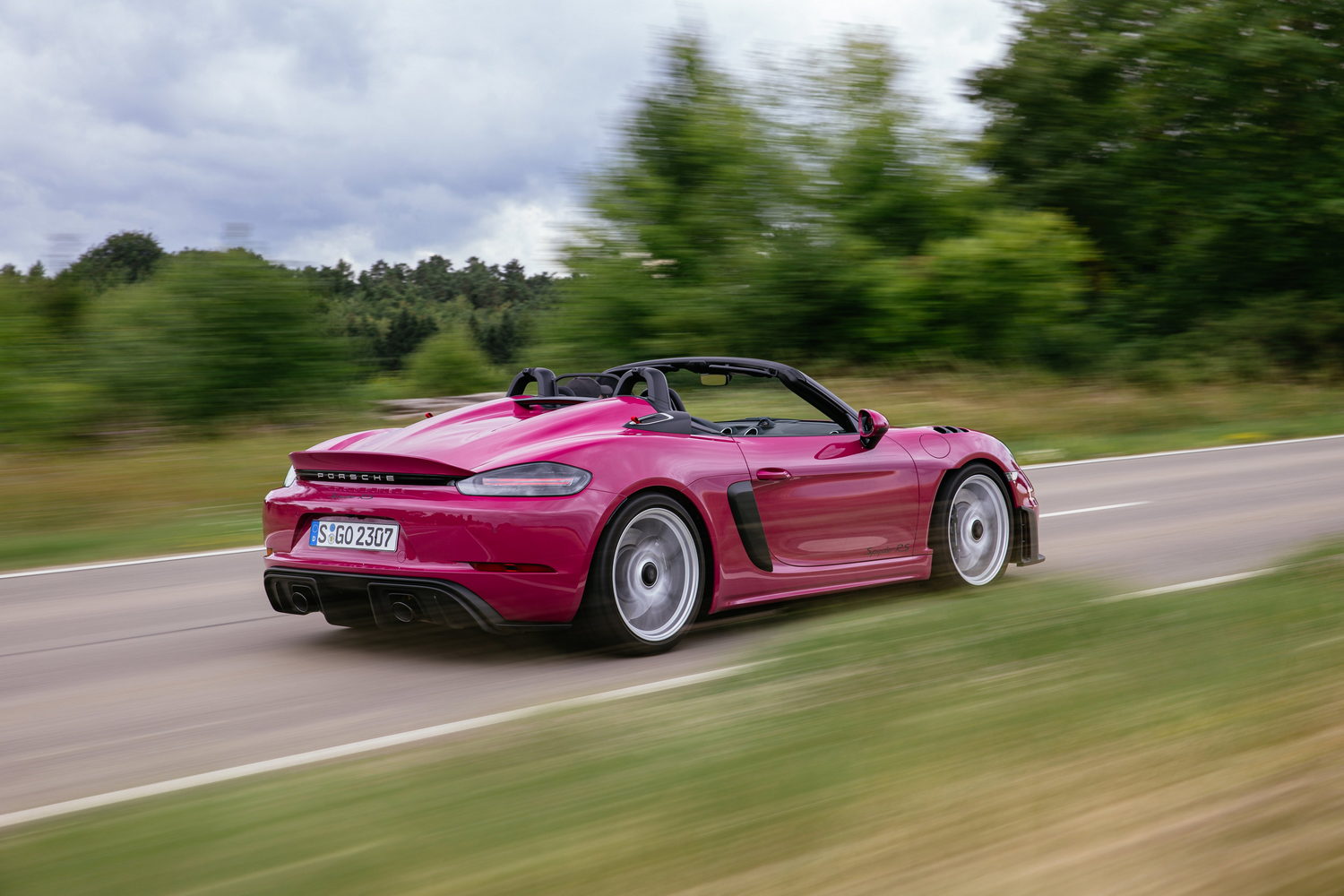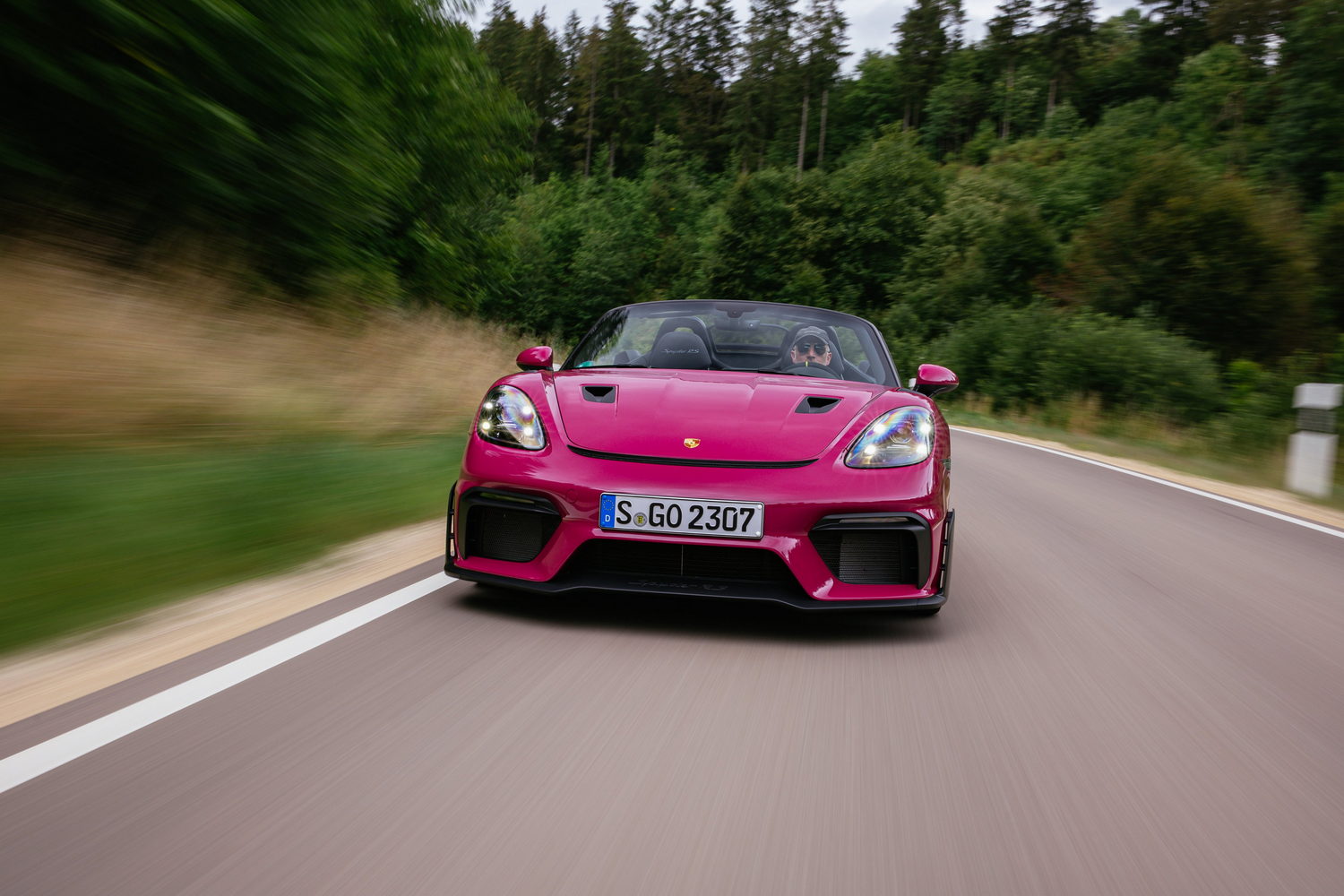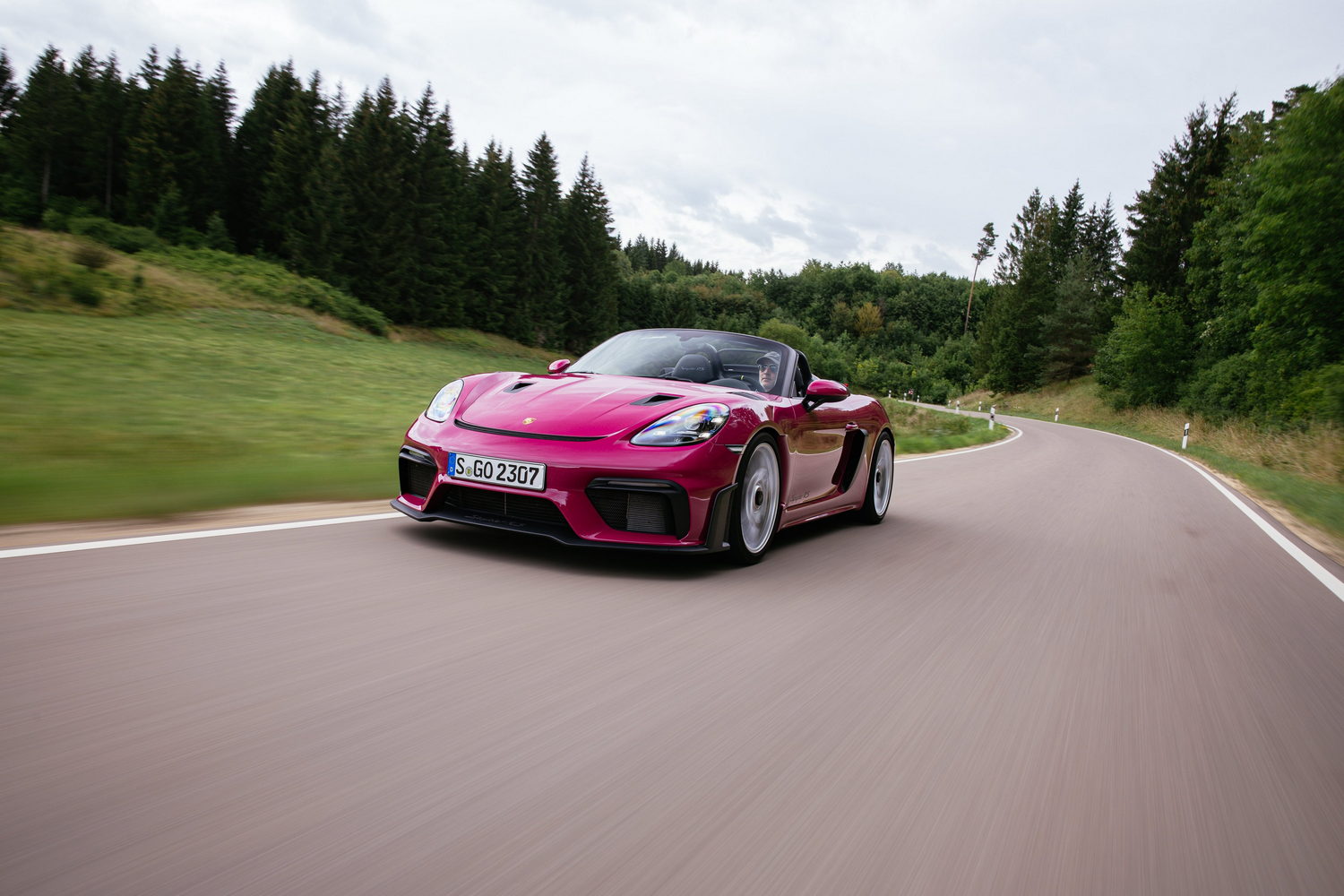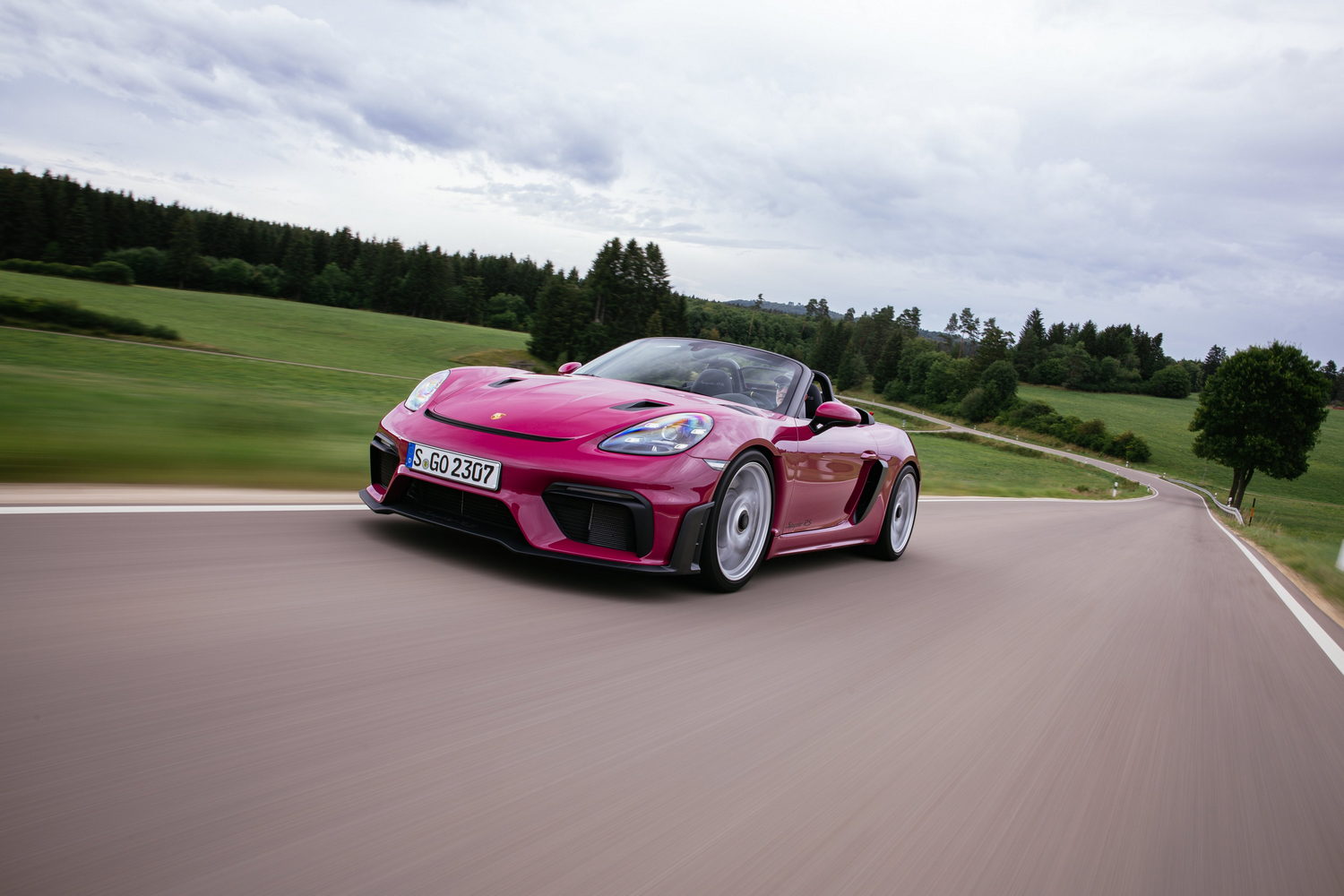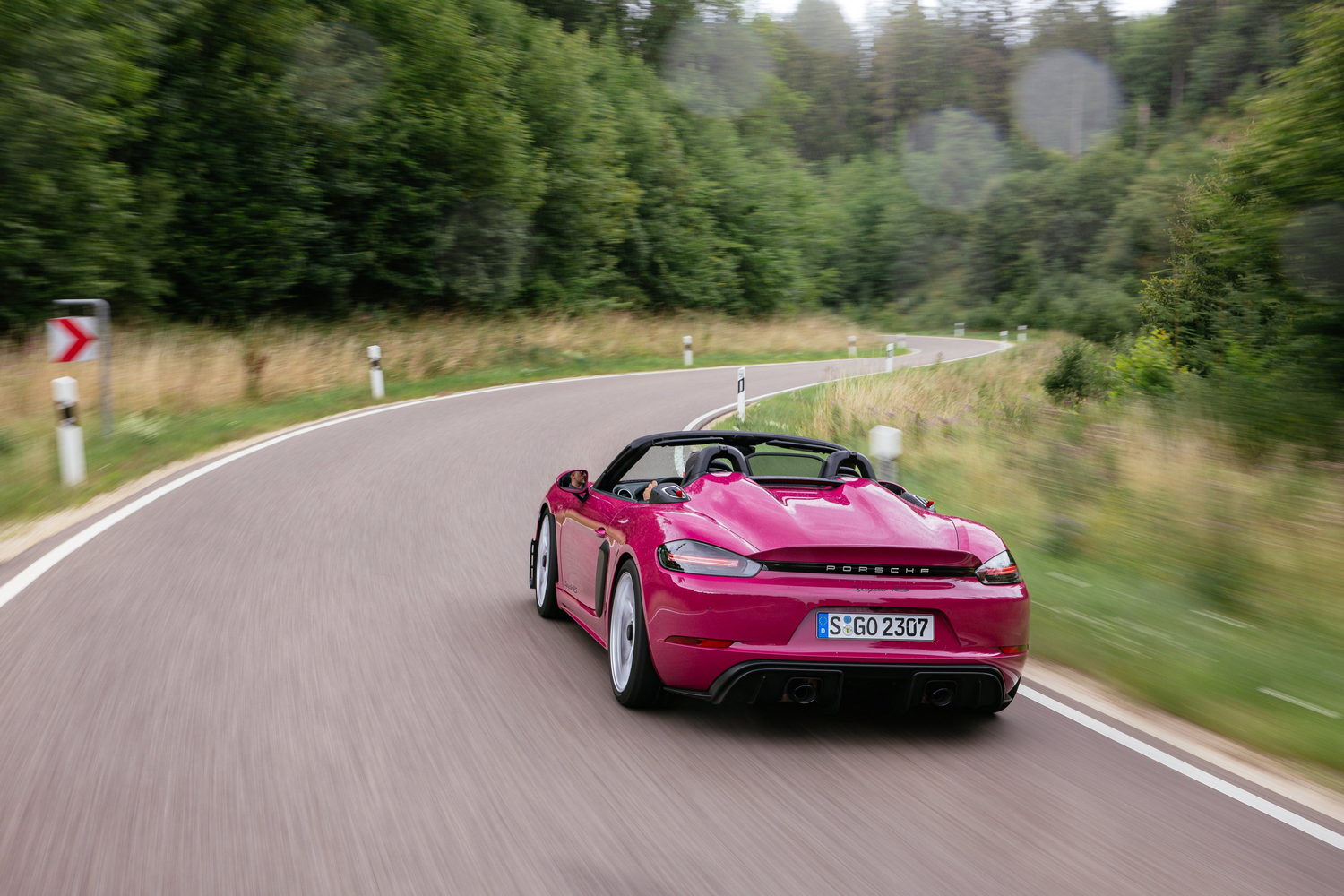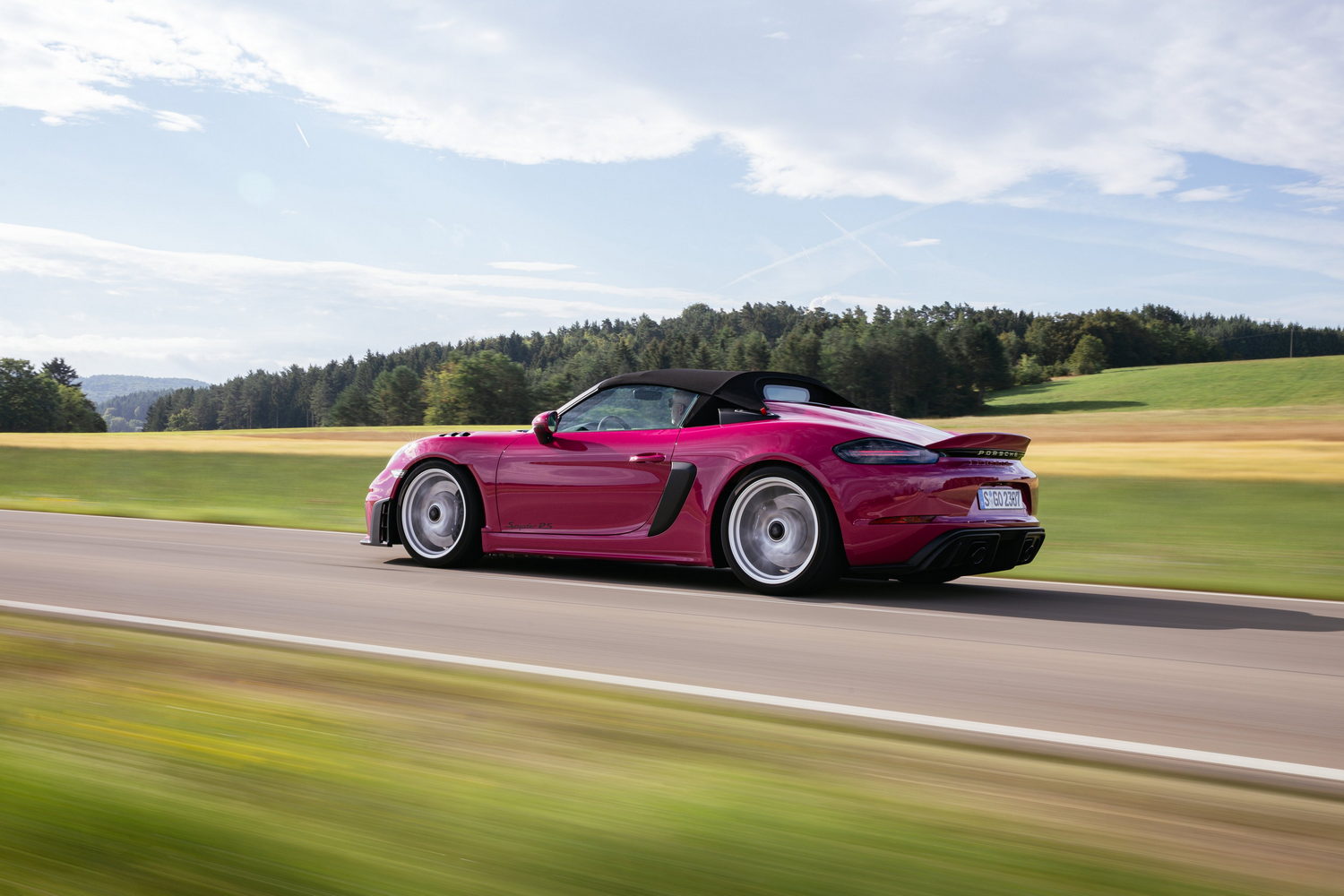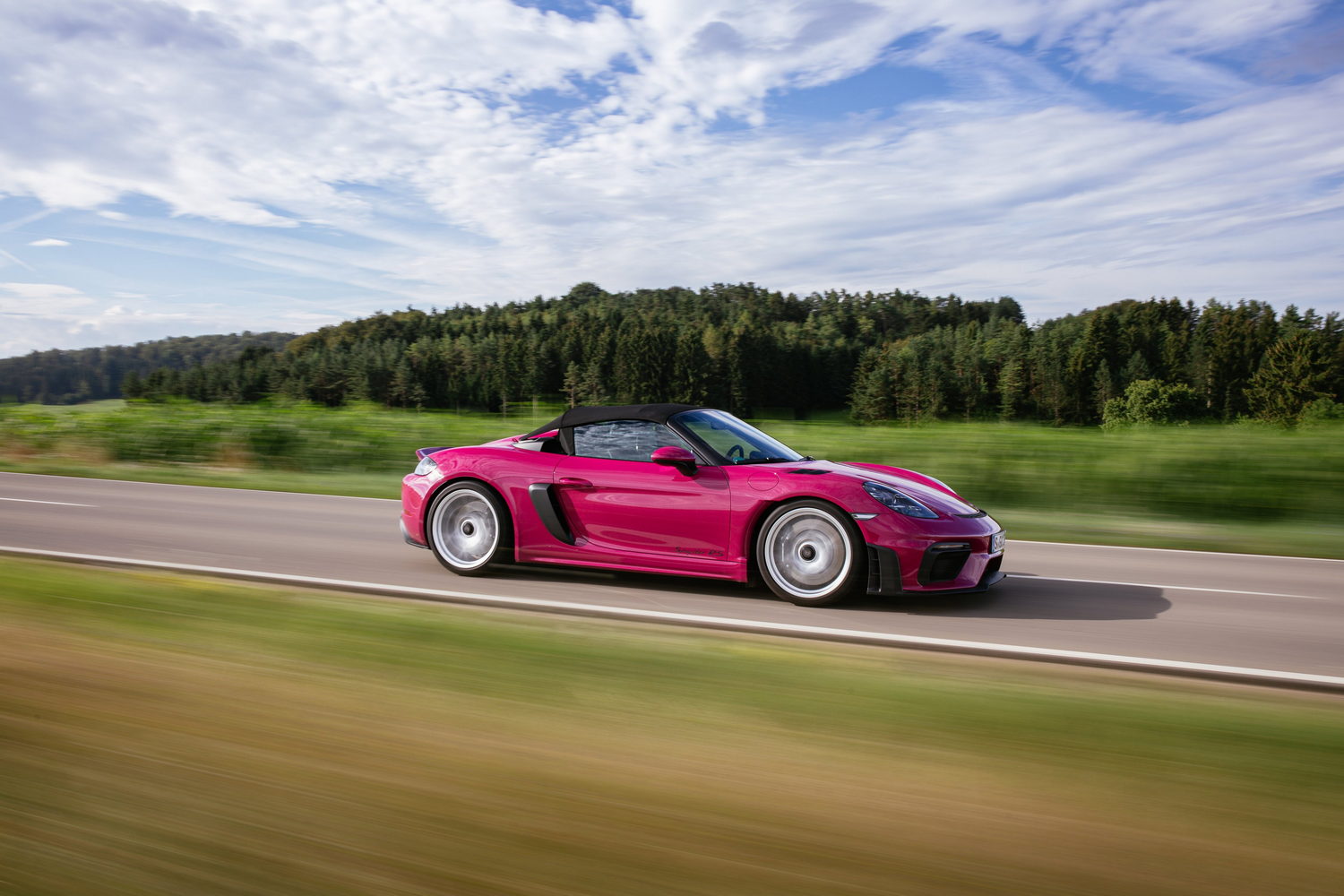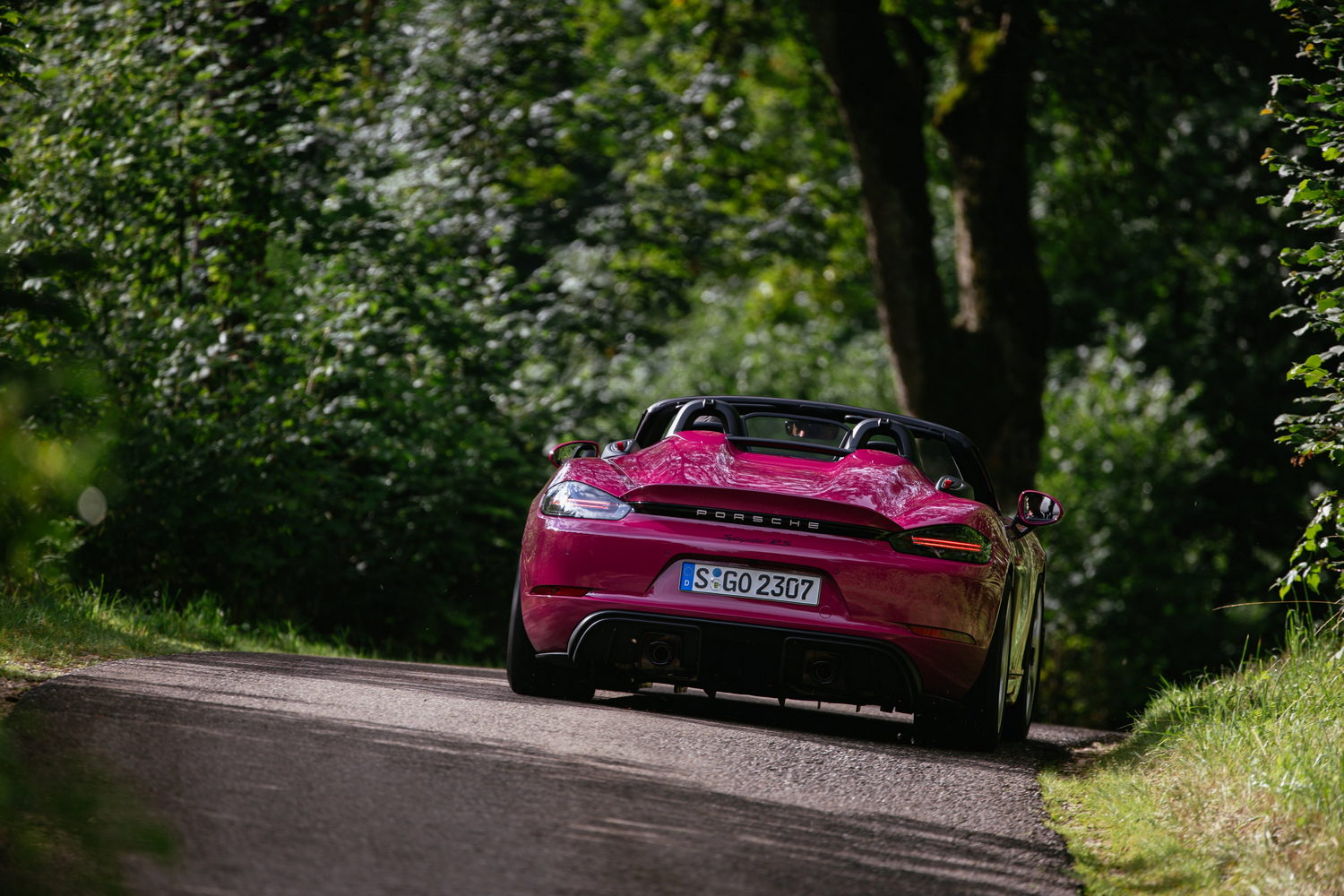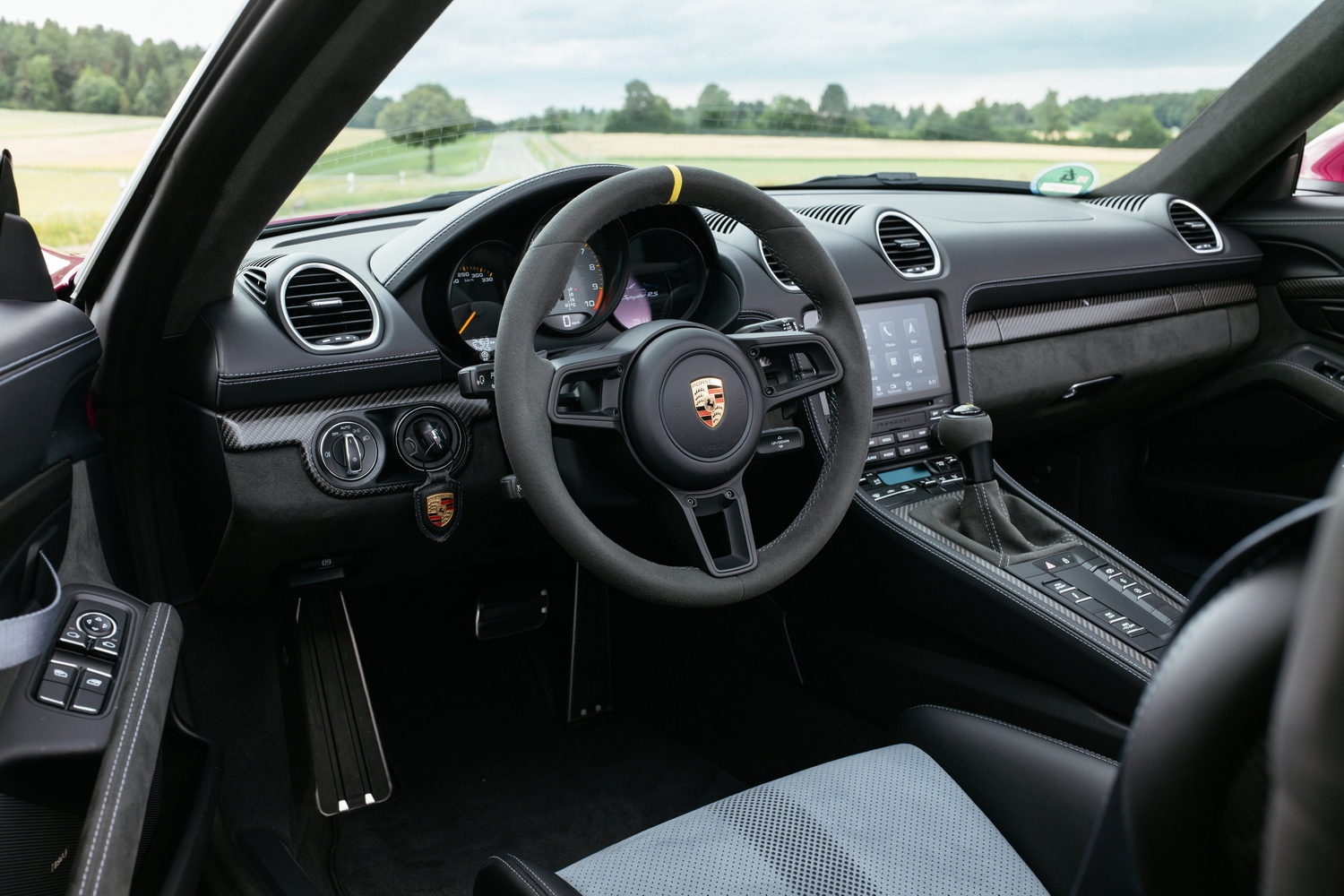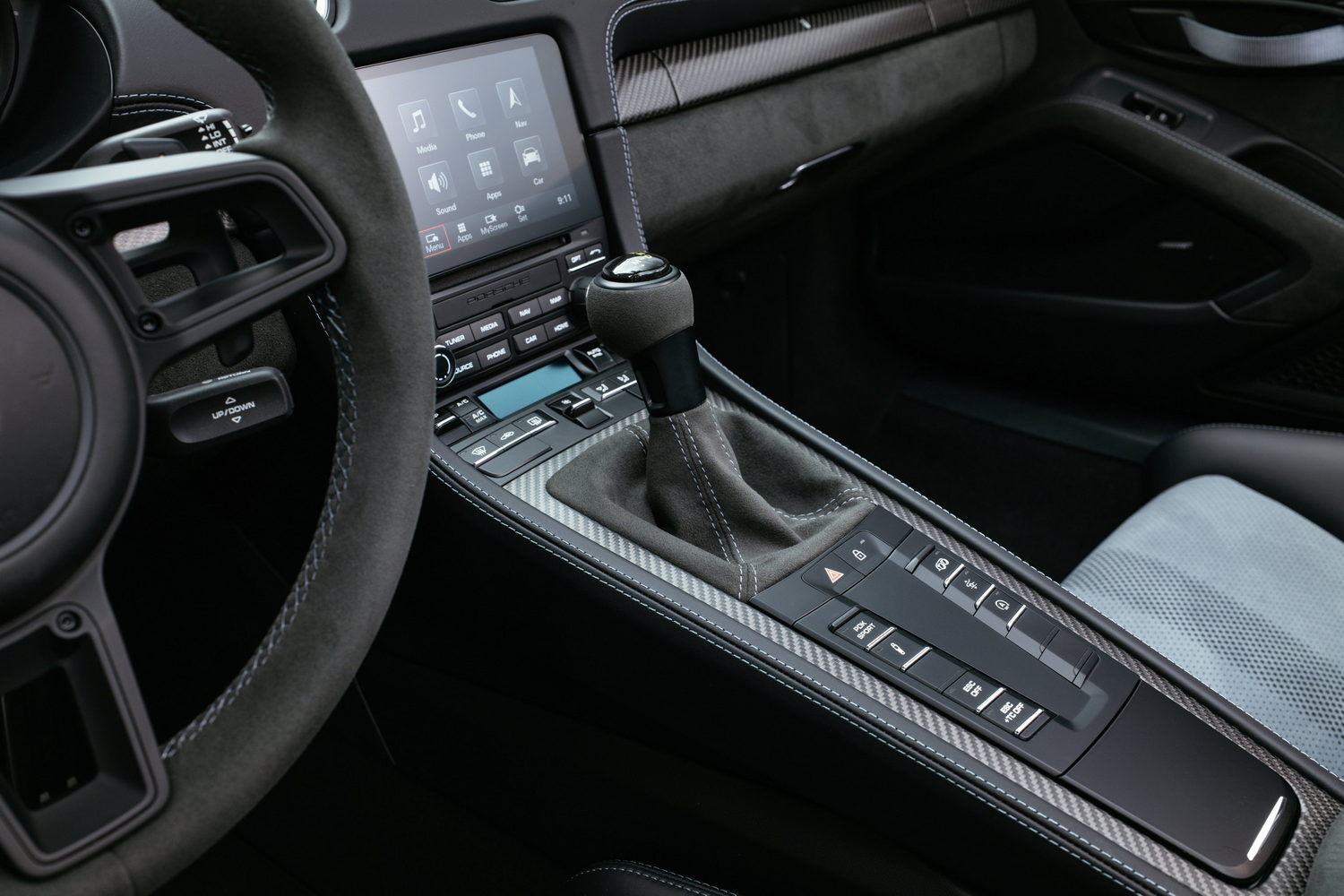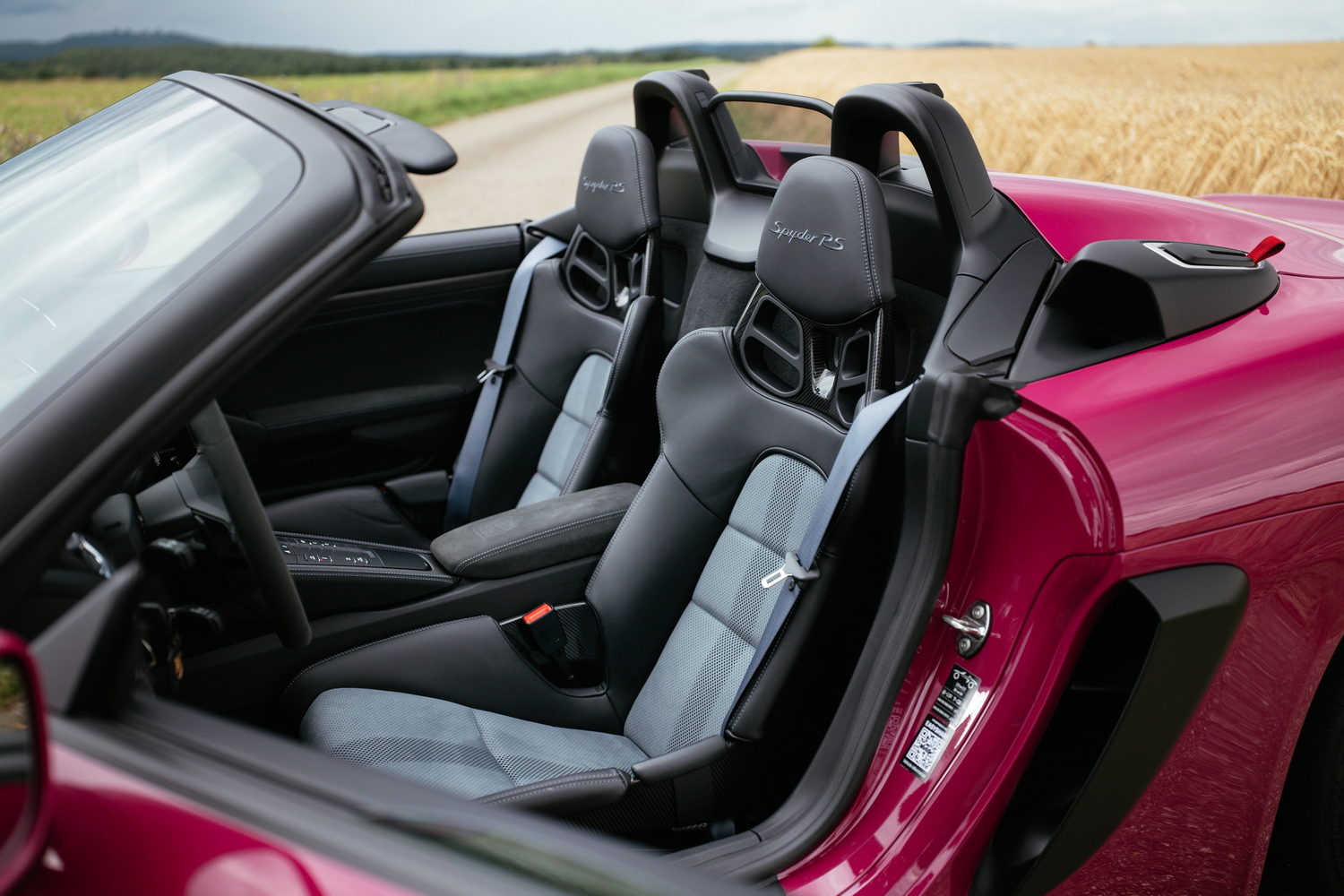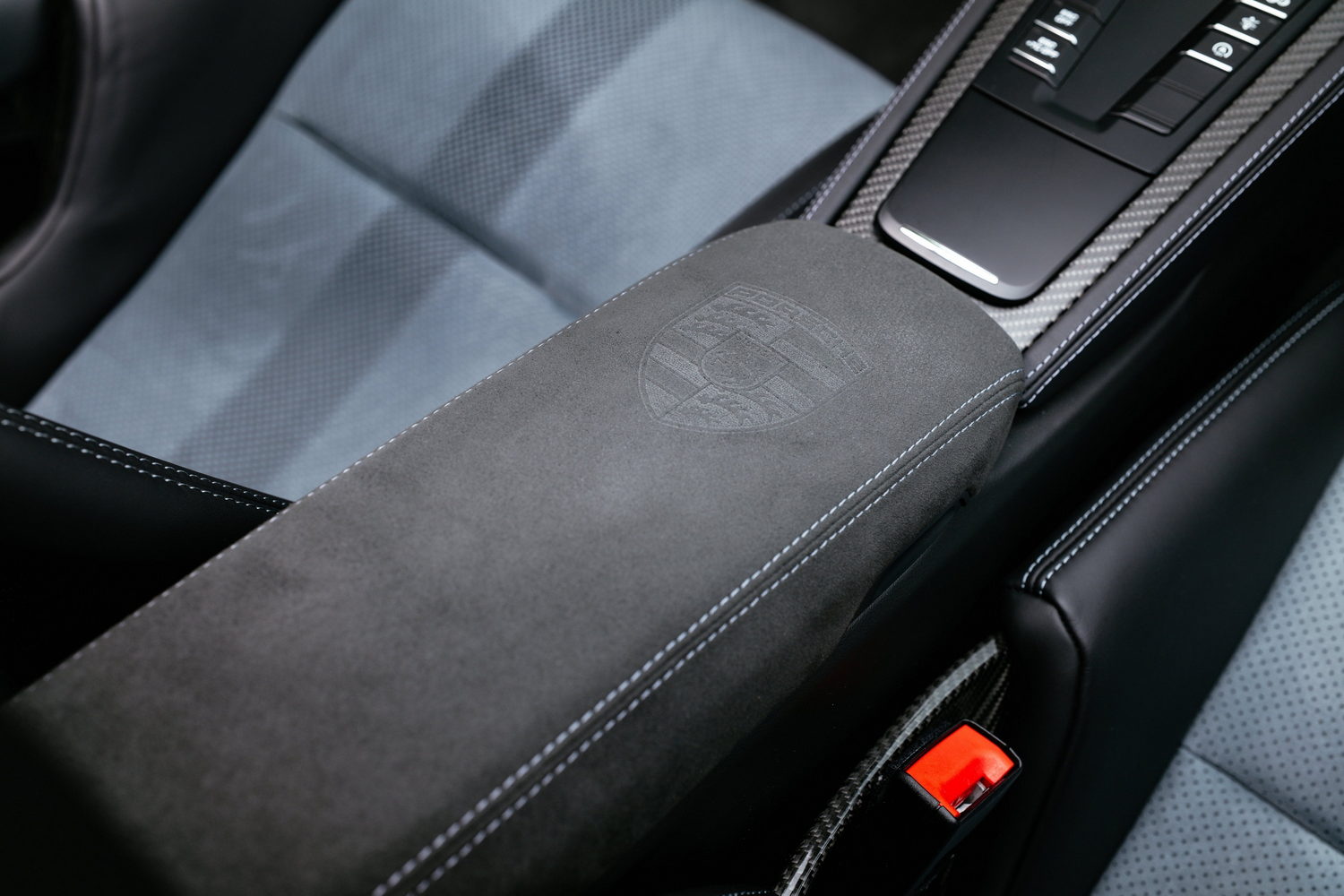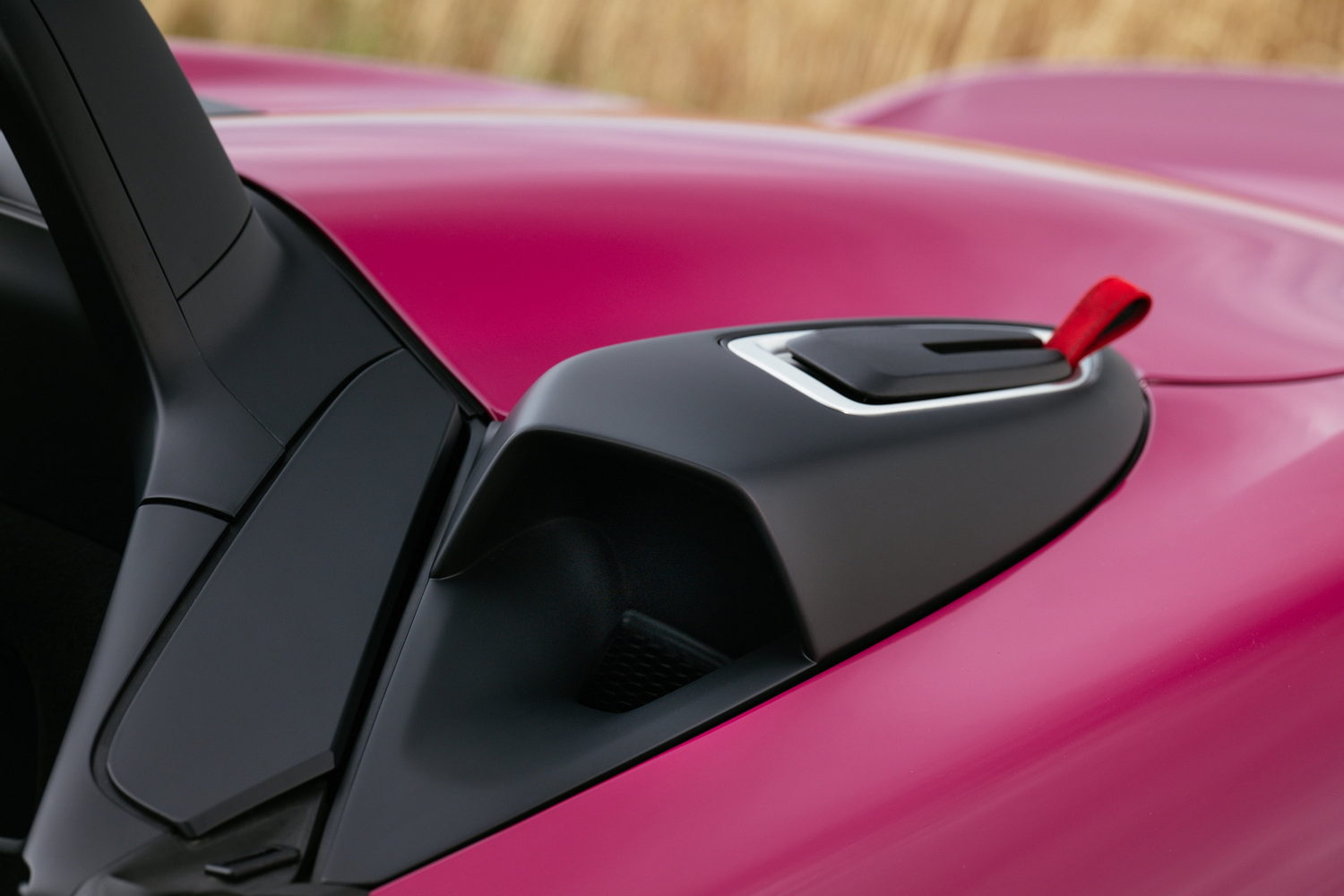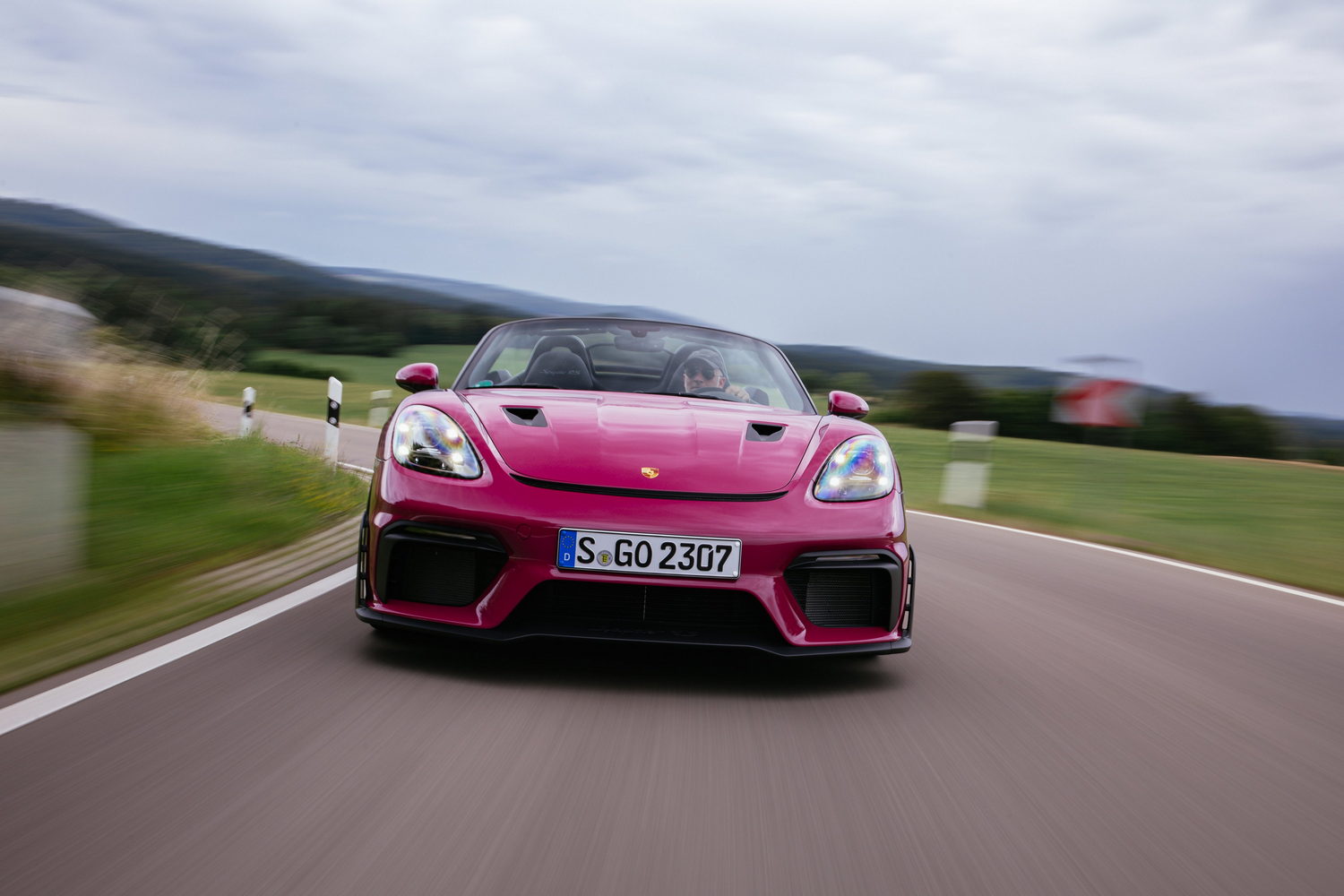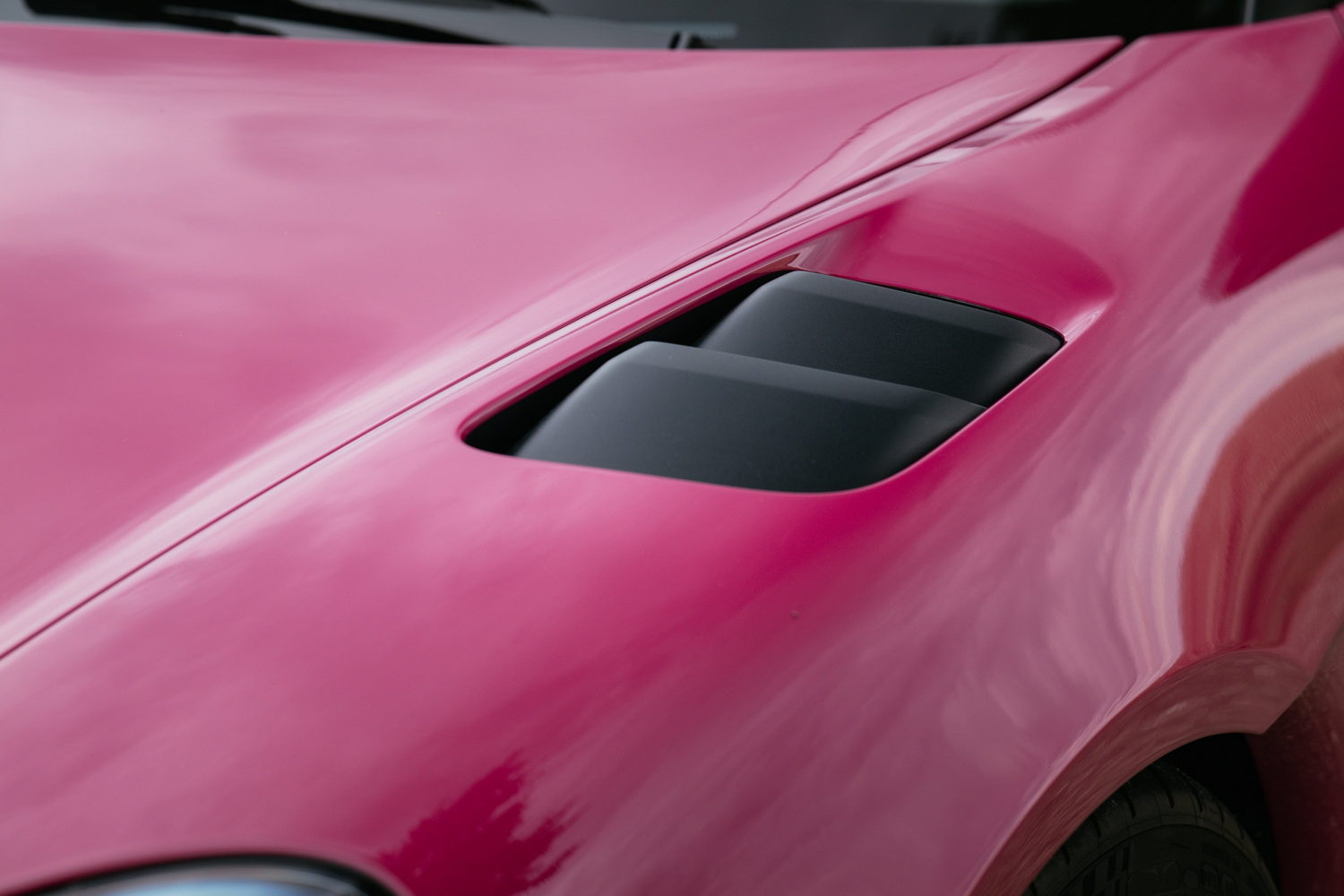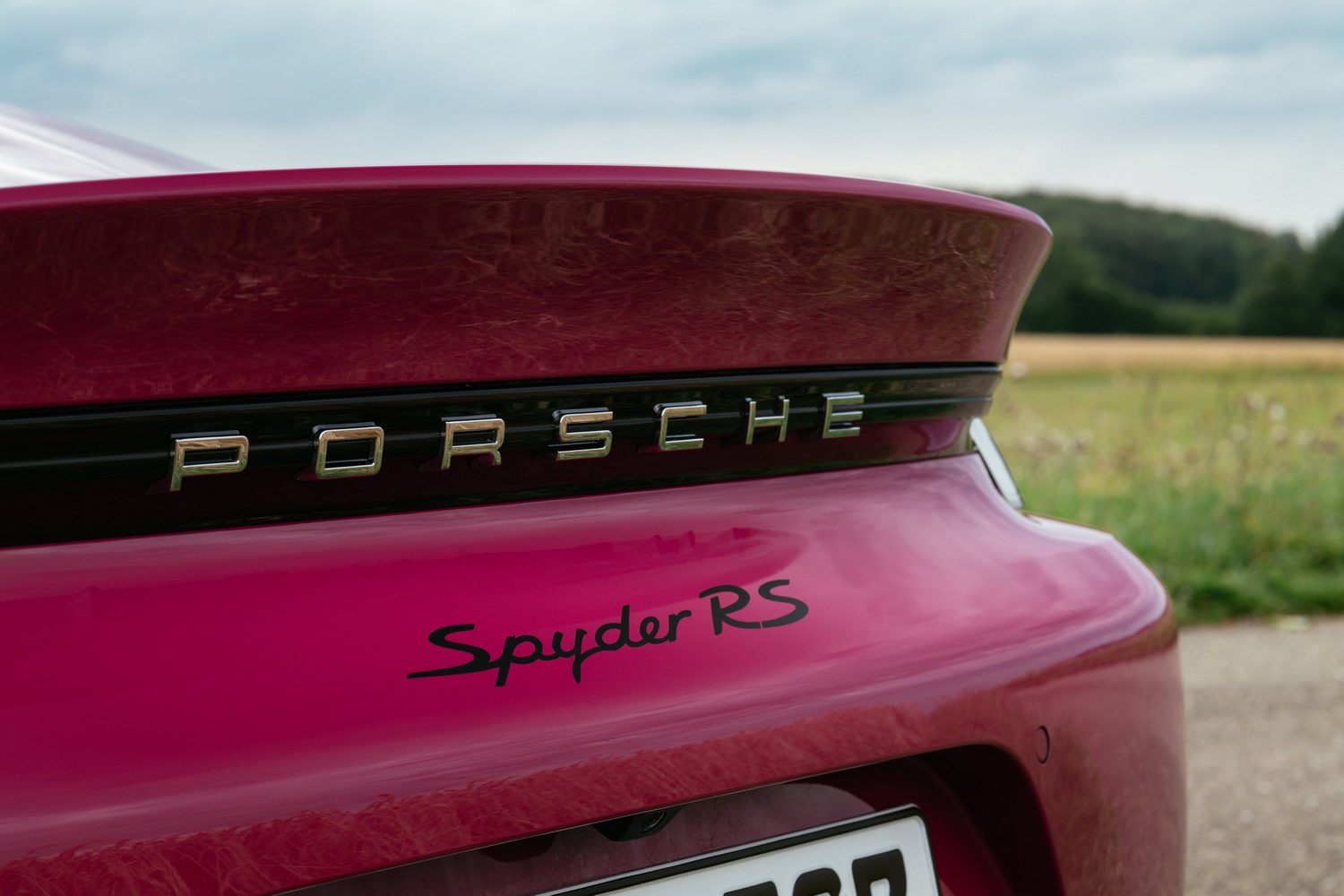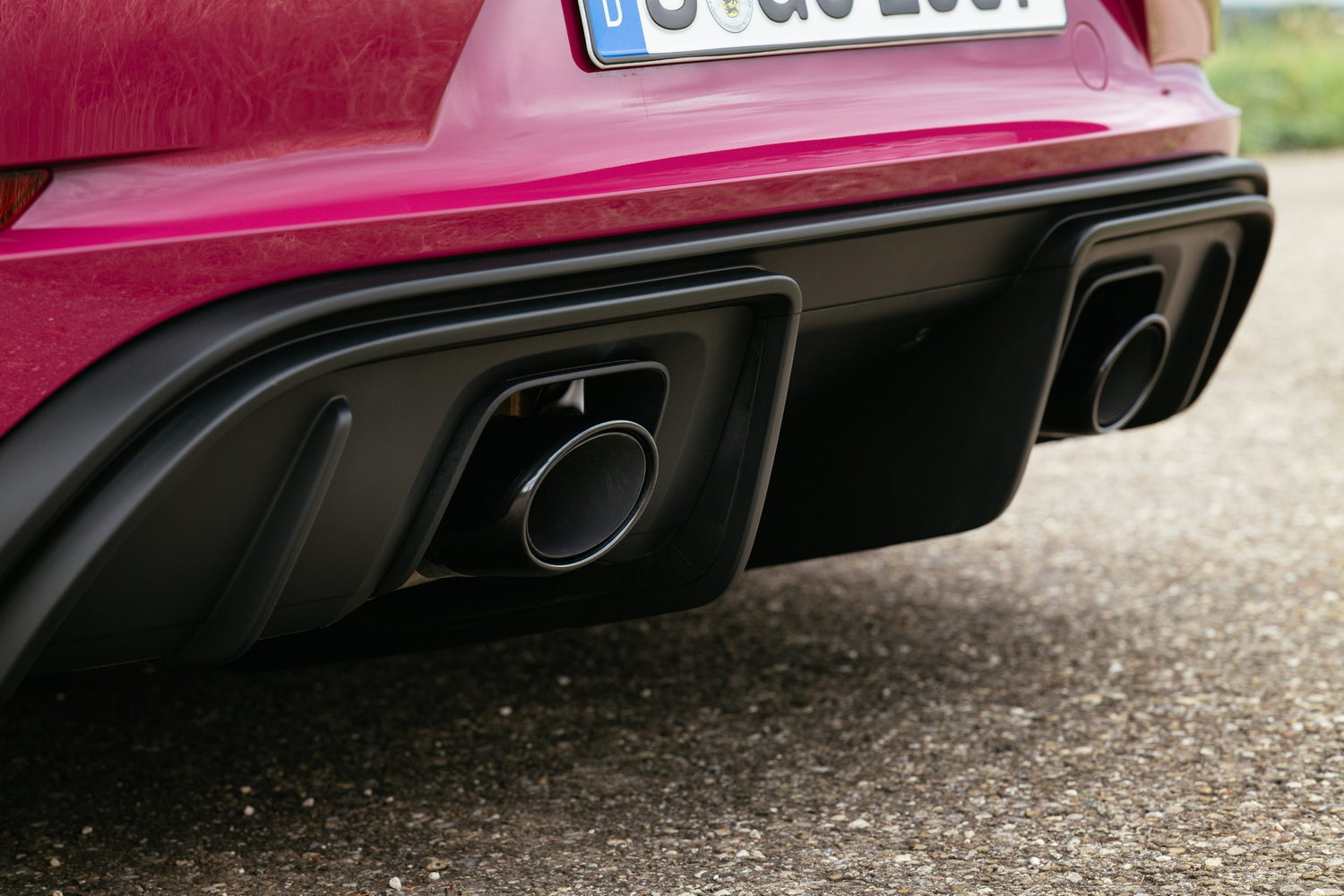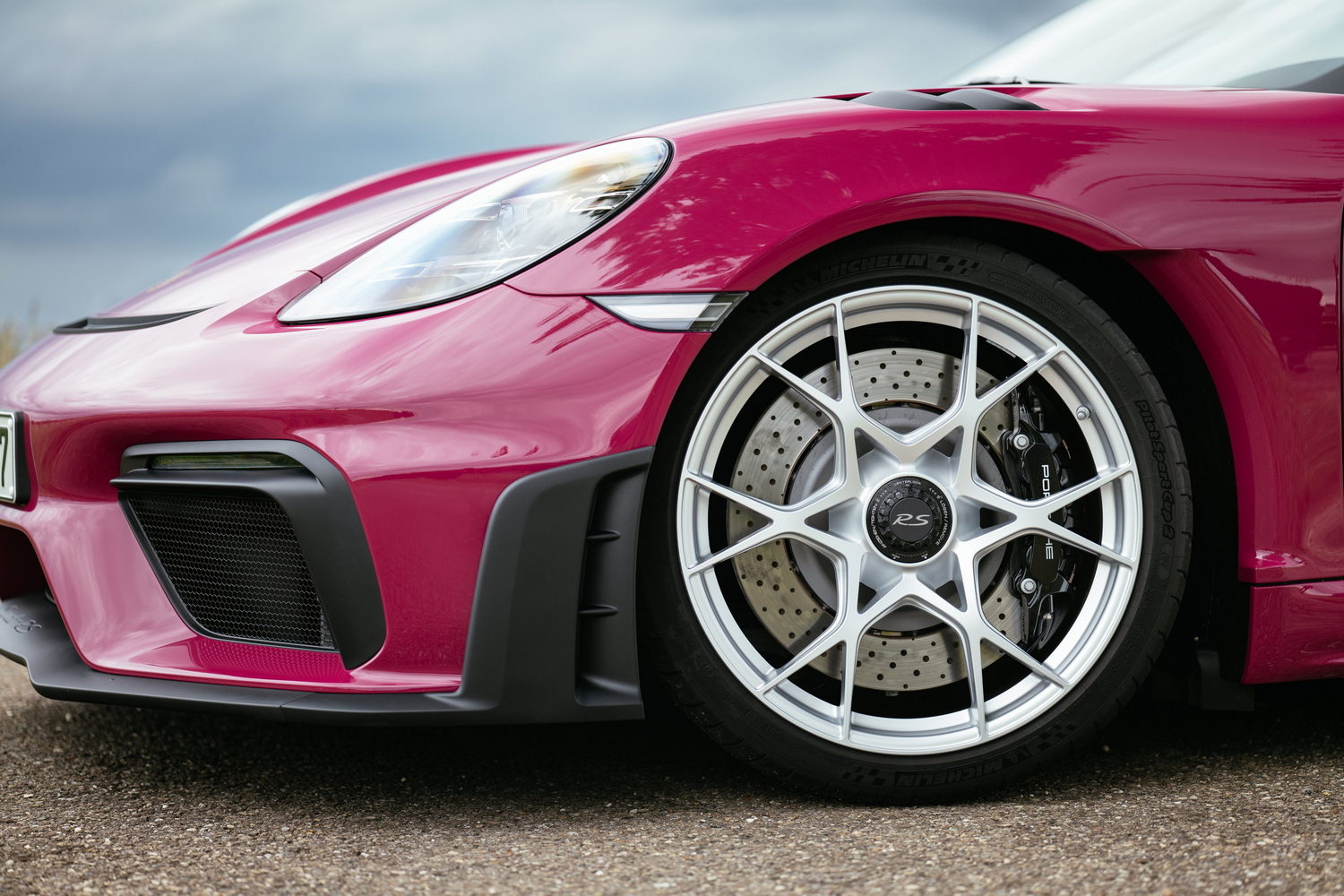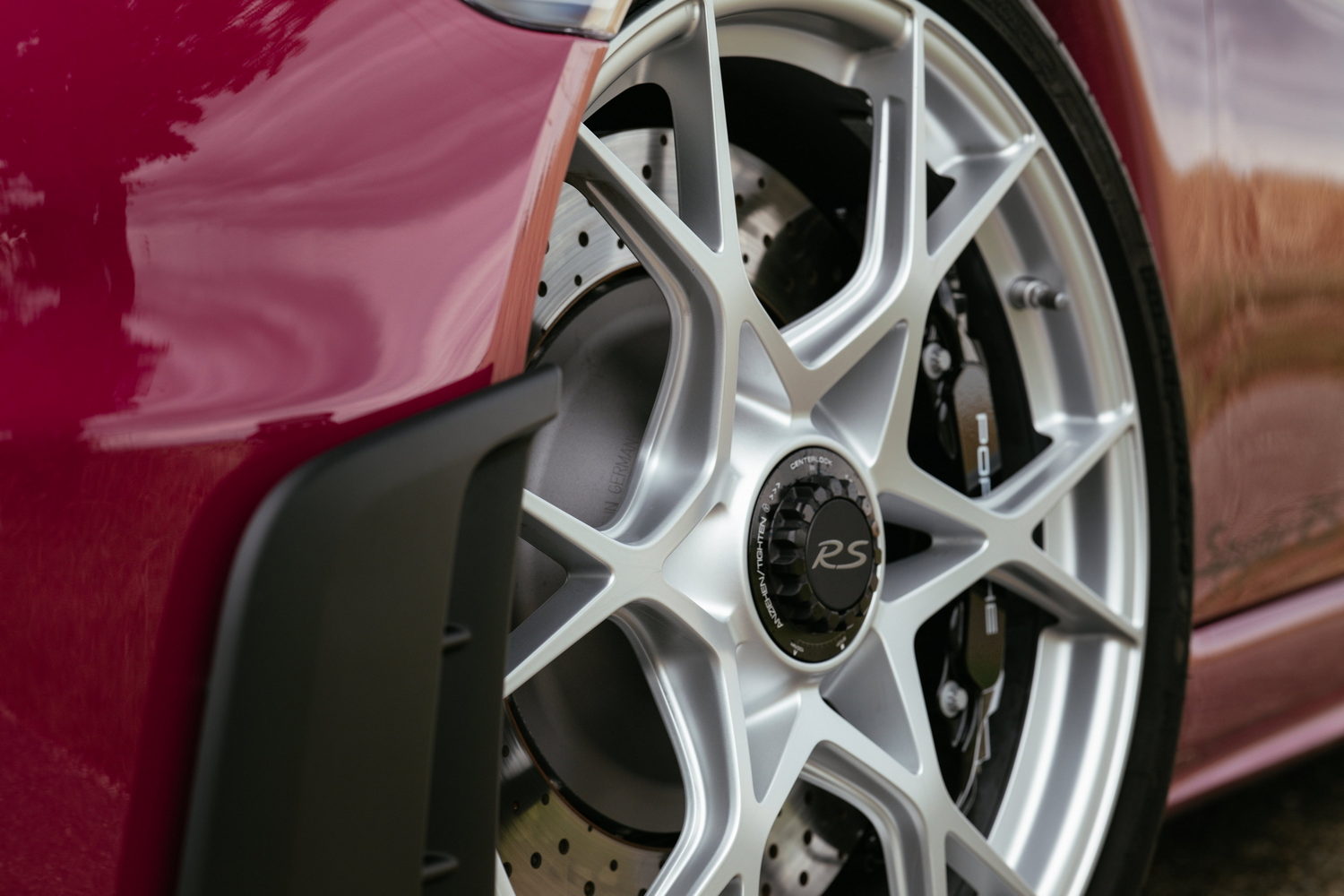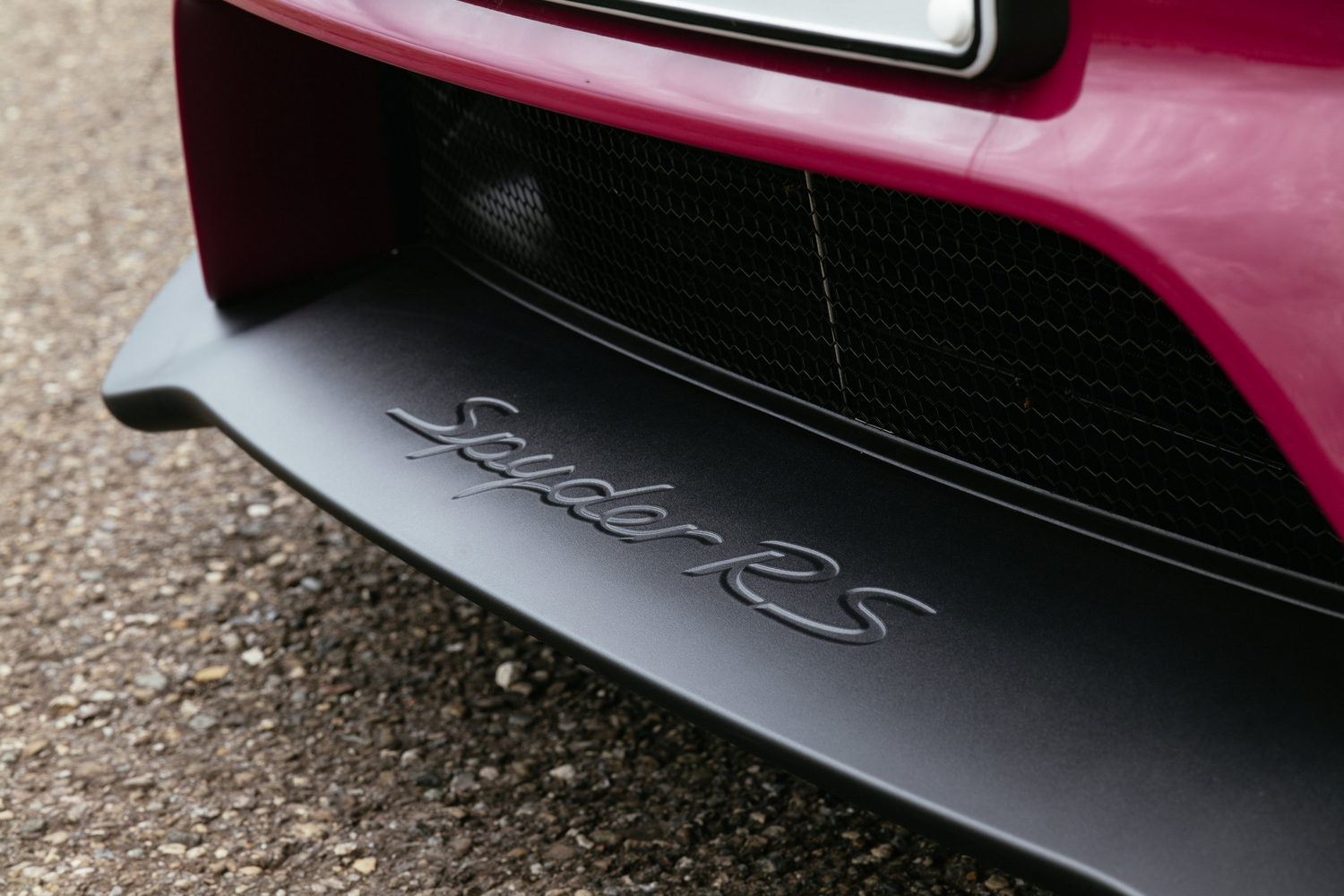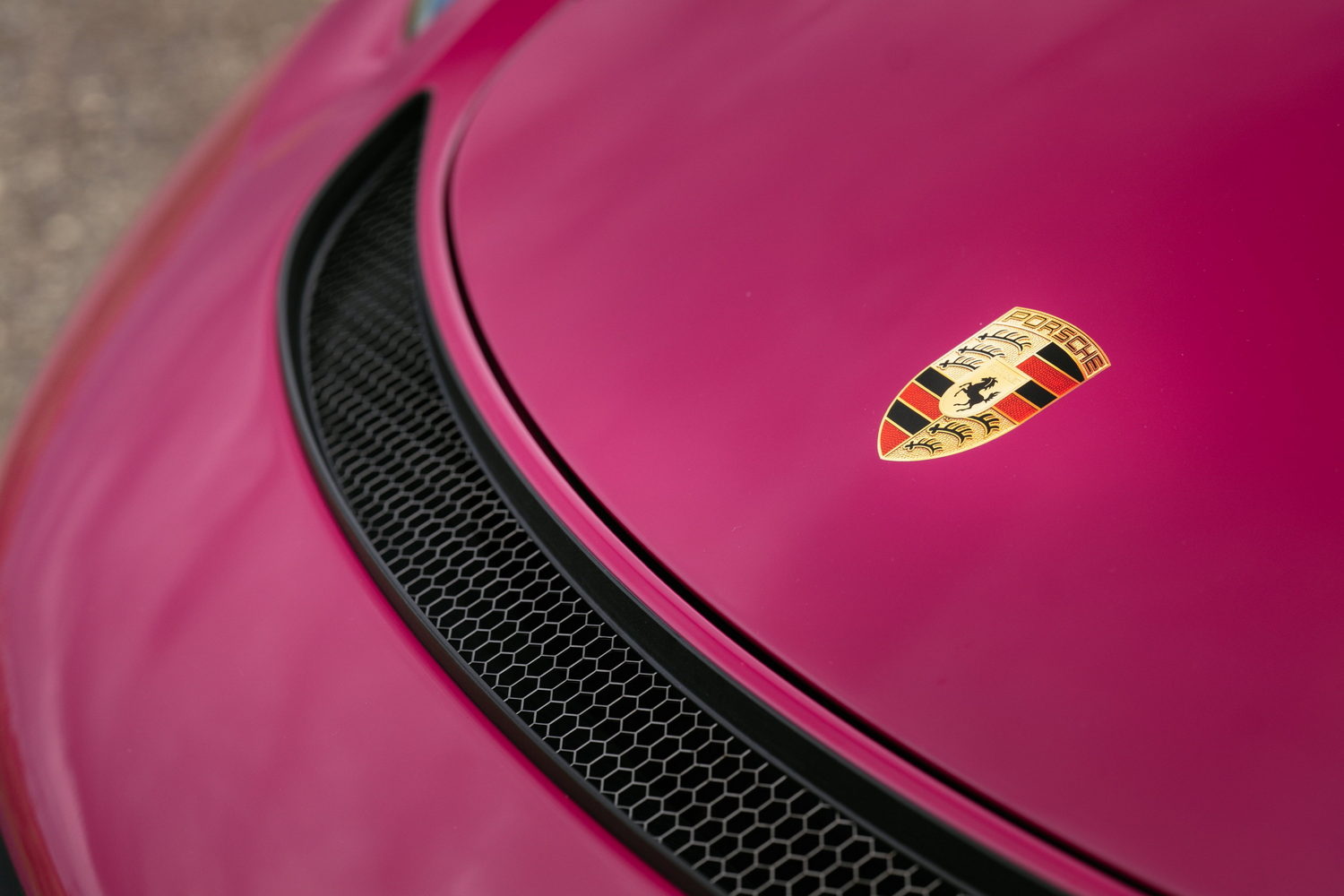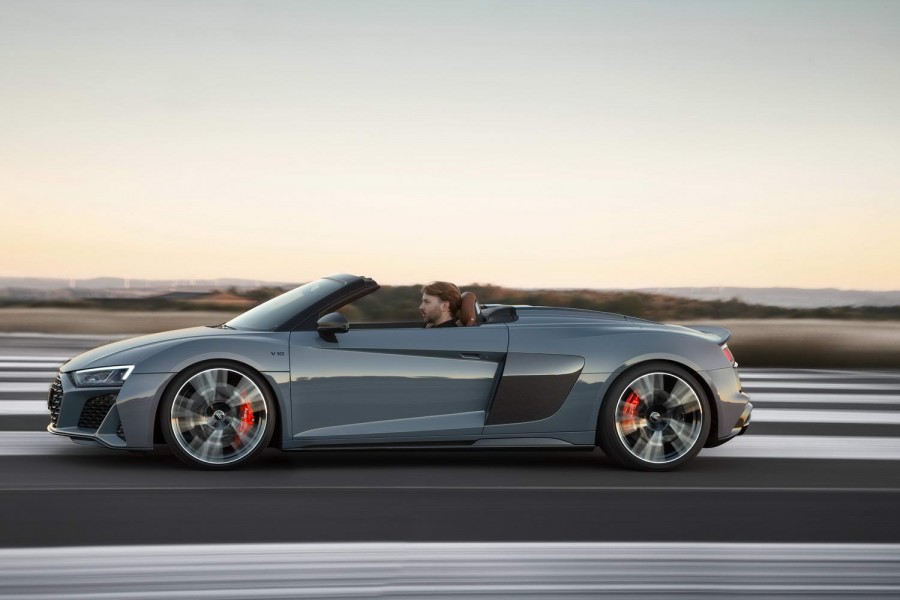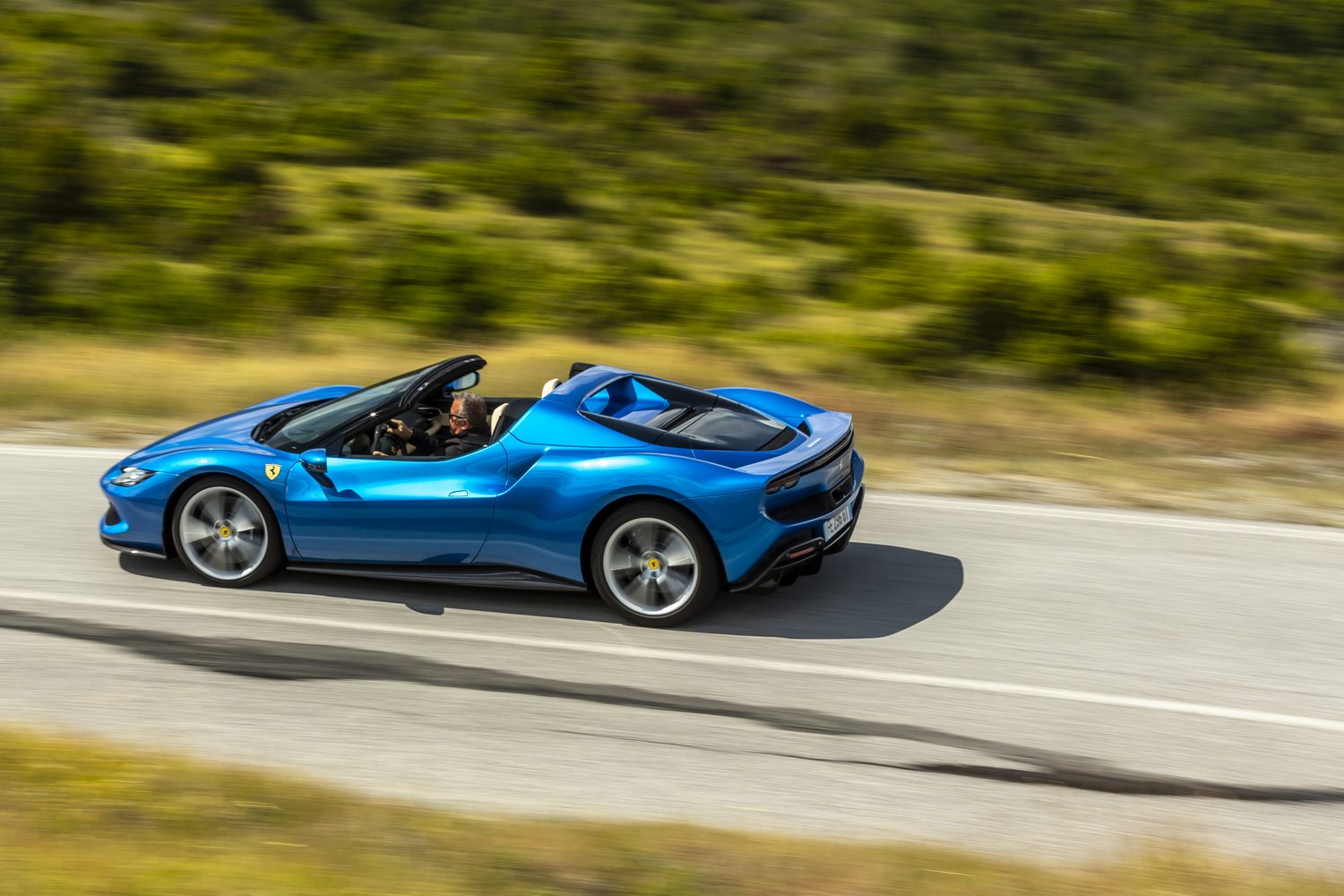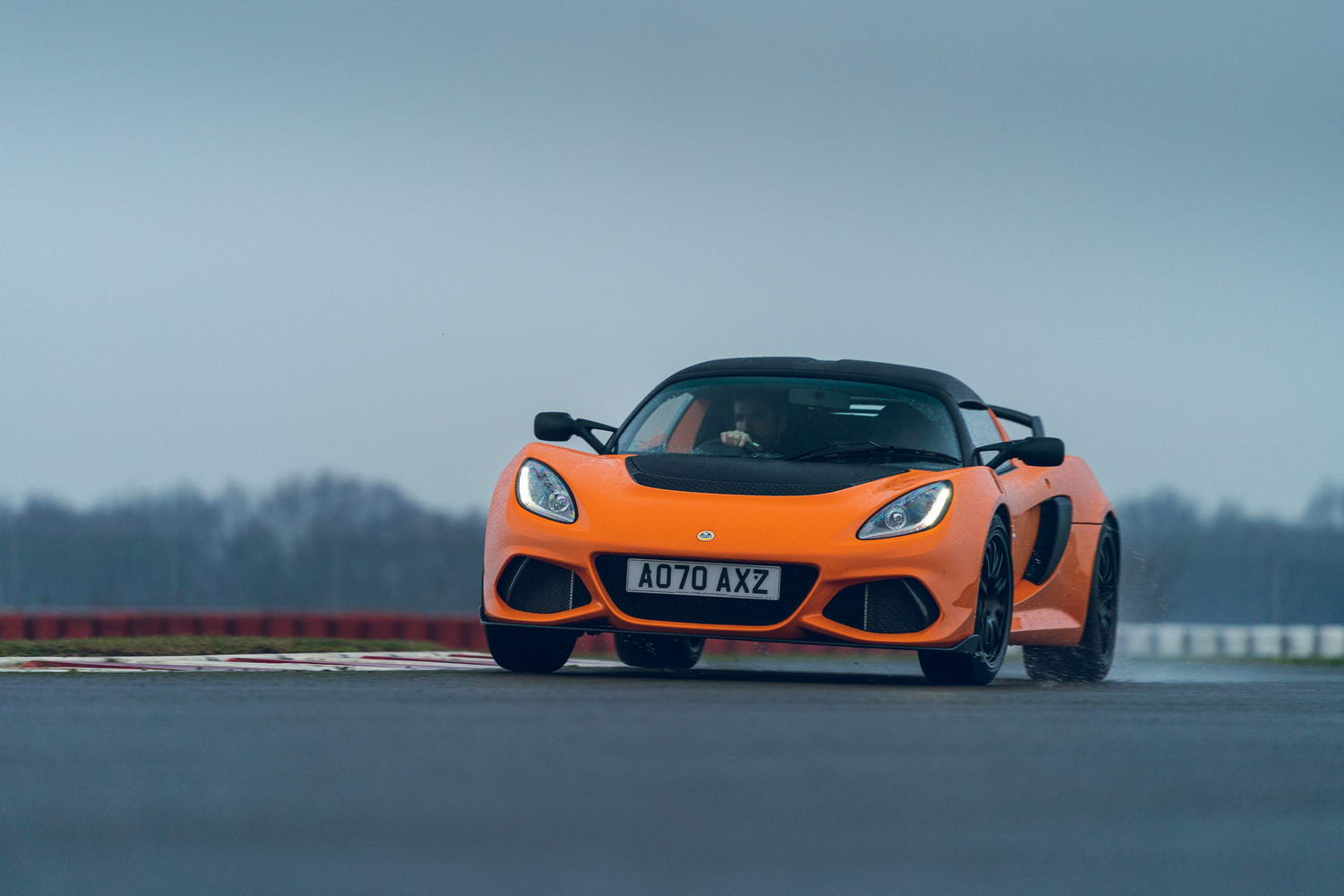In the 718 Cayman GT4 RS, Porsche created one of its best GT cars to date. Focused enough to be fabulous on a race track and supple enough to be usable on a country lane, it serves as proof (were it necessary) that few companies can do sports cars like Porsche can. Now, though, Porsche has applied the RS treatment to the 718 Spyder - the Boxster-based sibling of the Cayman GT4. But Porsche is promising a more road-orientated attitude for a car that's more than just a convertible version of the GT4 RS. It's also the last mid-engined, combustion-powered Porsche. So is it the special send-off the breed deserves?
In the metal
Although the 718 Spyder RS might be billed as a cross between the Porsche 718 Spyder and the Cayman GT4 RS, there's more to it than that. And also less. Because while this is supposed to be a lighter and more focused car than the Spyder and a more road-orientated car than the GT4 RS, it's also designed to be the pinnacle of the 718 Boxster.
With the car as we know it due to be replaced by an all-electric alternative, Porsche has pulled out all the stops to make the Spyder RS as good as it can be, learning from the GT4 RS and the Spyder, then combining the qualities of both to create a fitting swansong for Porsche's mid-mounted petrol engines. At least, that's the idea.
Externally, the influence of the Cayman GT4 RS is immediately apparent, but there are plenty of differences too. Yes, the nose design is more or less the same, with the bonnet and wheel arch vents and the centre-lock alloy wheels, as well as the decal in place of a standard Porsche logo, but the front splitter is slightly smaller. And at the back, Porsche has done away with the GT4 RS's big wing, preferring an oversized 'ducktail' spoiler.
That's because Porsche doesn't consider the Spyder to be a track car, and the company isn't seeking downforce you'll never use on the road. Instead, the engineers have sought out aerodynamic balance, reducing the lift created when the car travels at speed. But while it's very much a road car in terms of aerodynamics, it has the pared-back specification of a track car.
Take, for example, the roof. It's a complicated two-piece system that's a faff to assemble, but it does offer a choice of configurations - an electric folding mechanism would add weight. You can use the top cover alone as a speedboat-style sun shade, protecting you from the worst of the elements or from the sun's glare, or you can add the back panel for more security and weatherproofing. Erecting the thing takes a few minutes, rather than a few seconds, and you're probably going to get soggy while you do it if you've waited for the rain to start before you do.
But at least it's light. You can pick the roof up with one hand, and the top cover and back panel together weigh in at just 8kg. That means the whole assembly is 16kg lighter than the electric folding roof of a standard 718 Boxster. And if you leave the roof in the garage, it's a 24kg saving.
Combine that with the lightweight carpets and exhaust, and the Spyder RS is light. So light, in fact, that whereas most convertibles weigh 50 or 100kg more than their hard-top siblings thanks to the roof mechanism and extra strengthening required when you hack away the metal roof, the Spyder RS is 5kg lighter than the GT4 RS.
Under the roof, there's the same lightweight, sporty interior as you get in the GT4 RS, with Porsche's Race-Tex taking pride of place. There's carbon dashboard trim, too, and you get sporty bucket seats as standard, with 18-way adaptive chairs a no-cost option.
Otherwise, it's pretty conventional 718 Boxster fare, with the same analogue instruments and central touchscreen. Admittedly, it's feeling a little dated now - the 718 is seven years old after all - but it all works nicely, and having buttons to press makes life much easier than hiding all the functions in a touchscreen menu. Buttons on the steering wheel would be welcome, though. Porsche might be trying to promote driving ahead of infotainment, but it would be nice to get rid of some of the stalks behind the steering wheel and replace them with clear buttons on the wheel itself.
But while we can complain about the ergonomics, and even about some of the plastics, there's no arguing with the build quality. The 718 Spyder RS's cabin feels bulletproof, and most of the materials are as premium as they come. Admittedly, the lightweight fabric door handles take a bit of getting used to, but even they have a reassuringly mechanical action.
And while the roof may not be the most practical thing on the planet, the cabin isn't bad at all. Two tall adults can sit there in perfect comfort, with reasonably adjustable seats and a great driving position, as well as plenty of headroom when the roof is up. And though refinement is an issue (under acceleration the Spyder RS is loud with the roof up and deafening with it down) the cabin isn't too blustery when the roof is folded and stowed.
Better still, there's a total of 245 litres of luggage space. Sure, that space is split between two luggage bays - one in the front and one in the back - but if you use soft bags rather than suitcases, you can squeeze plenty of stuff in there. Certainly, it'll take the shopping or enough luggage for a weekend away. And though the rear panel of the hood is stowed in the boot, it doesn't take up too much space.
Driving it
Deep in the bowels of the 718 Spyder RS is the same 4.0-litre flat-six petrol engine found in the Cayman GT4 RS and the 911 GT3. As with the GT4 RS, its position in the middle of the car means it needs a longer exhaust system than in the rear-engined 911, and those pipes have to take a slightly more tortuous route. As a result, both the Spyder RS and the GT4 RS are 10hp down on the 911 GT3, but a nice, round 500hp is still not to be sniffed at.
Certainly, a 0-100km/h time of 3.4 seconds and a top speed of more than 300km/h is impressive enough, but it's nothing on the noise the 718 Spyder RS produces when you put your foot down. The majority of the noise, particularly below about 5,000rpm, comes from the intakes over your shoulder, so it's very loud with the roof down. And although the two-piece roof keeps the intakes on the outside for obvious reasons, it's loud with the roof up, too. It's a good excuse for giving your partner the silent treatment, but it makes conversation difficult.
Happily, the noise is more refined than it is in the GT4 RS that notoriously chunters and gurgles at idle, so it feels a bit more grown up, but it's still savage. The sound is a tad flat below 3,000rpm, but above that it starts to come alive, stretch it past 6,000rpm and it begins to howl, but the real fun starts at 8,000rpm. As it passes through peak power, the heady mixture of exhaust and intake sounds create a gasoline-fuelled scream that carries on right the way to the 9,000rpm redline.
And if you want to enjoy that noise regularly, there's good news. Unlike the GT3, which pairs the same engine with a manual gearbox, the Spyder RS gets a similar seven-speed automatic to the GT4 RS. But it's such a snappy, sharp transmission that you can thwack through the ratios at will using the paddles or the sequential gear lever. In truth, the paddles are better, but the lever does have a tactile resistance to it that makes life a little more exciting.
But for excitement, it's hard to match the Spyder RS's handling. The suspension set-up is slightly softer than that of the GT4 RS, with more travel available to each wheel for a more compliant, road-going set-up. The car was even tested in the UK to give Porsche a taste of some less-than-exemplary road surfaces. As a result, the Spyder RS is more comfortable and less highly strung than the GT4 RS, with a stiff ride that just about manages to take the edge off the bumps. And although it isn't quite as sharp as the coupe, the Spyder RS still feels immensely agile.
The steering is predictably brilliant, mixing feel with the perfect weighting, and the car's balance is sublime. The result is a fantastically intuitive car that's quite happy to send its back end sideways - particularly in the wet - but that's also easily controllable when it does.
On the flipside, the visibility with the roof up isn't great, particularly over your shoulders, and it's noisy when you don't necessarily want it to be, which makes it pretty useless as a long-distance cruiser. And it's thirsty. It'll burn through 13 litres of unleaded every 100km - and that's the official figure. In the real world, you're probably talking about 15 litres/100km. Still, it's arguably worth it for the performance.
What you get for your money
The 718 Spyder RS costs exactly the same amount as the GT4 RS, at €235,138, but though there's no premium for the roadster body style, nobody will call it "cheap". At least both cars come with much the same standard equipment, including the touchscreen navigation system, two-piece roof and Race-Tex upholstery, not to mention climate control and the seven-speed automatic gearbox. And of course, being a Porsche, you can always add to that with a veritable fleet of optional extras.
Summary
Porsche claims the Spyder RS is the pinnacle of its mid-engined petrol cars, and there's definitely something spectacular about the new drop-top. It isn't as focused or as visceral as the Cayman GT4 RS, but that isn't necessarily a criticism. With its softer set-up, the Spyder is much better suited to road use, and it's every bit as fantastic - if not more so - on the right road. Admittedly, the roof means it'll only ever really be a toy, but it's one hell of a toy all the same.

